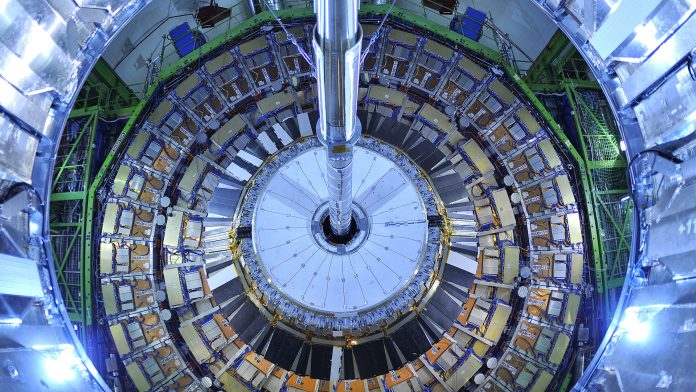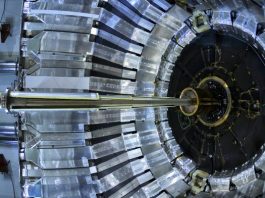The CMS experiment has used data from Run 3 of the Large Hadron Collider to present its first search for dark photons.
The new study explores the possibility of dark photon production in the decay of Higgs bosons in the detector.
The results define more constrained limits on the parameters of the decay of Higgs bosons to dark photons. This will help narrow down the area where physicists can search for them.
What are dark photons?
Dark photons are described as exotic, long-lived particles. They are long-lived because they have an average lifetime of more than a tenth of a billionth of a second. This is a long lifetime compared to particles produced in the Large Hadron Collider (LHC).
The particles are described as exotic because they are not part of the Standard Model of particle physics.
The Standard Model is the leading theory of fundamental building blocks of the Universe.
However, many physics questions are unanswered, so a phenomena beyond this model is required.
Retracing the tracks of the muons
In theory, dark photons would travel a measurable distance in the CMS detector before they decay into displaced muons.
However, scientists would discover they didn’t reach the collision point if they tracked the muons. This is because the tracks come from a particle that has already moved away without a trace.
Improving the ability to trigger displaced muons
In July 2022, Run 3 of the LHC began. This run has a higher instantaneous luminosity than other LHC runs. This means that more collisions are happening at any moment in time.
The LHC produces millions of collisions every second, but only a few thousand can be stored. This is because recording every collision would quickly consume all the available data storage.
To get around this problem, CMS is equipped with a real-time data selection algorithm called the trigger, which decides whether or not a collision is interesting.
It is, therefore, not only a higher volume of data that would help to reveal evidence for dark photons, but the way the trigger system is fine-tuned to look for specific phenomena.
Juliette Alimena from the CMS experiment said: “We have really improved our ability to trigger on displaced muons.
“This allows us to collect much more events than before with muons that are displaced from the collision point by distances from a few hundred micrometres to several metres. Thanks to these improvements, if dark photons exist, CMS is now much more likely to find them.”
The refined trigger system helps the search for the particles
The CMS trigger system was refined between Runs 2 and 3 to search for dark photons. As a result, the collaboration has used the LHC more efficiently, obtaining strong results using a third of the data as previous searches.
The CMS team did this by refining the trigger system via a new algorithm called a non-pointing muon algorithm. This improvement meant that with just four to five months of data from Run 3 in 2022, more displaced muon events were recorded than in Run 2, which had a much larger dataset.
The coverage of the trigger increases the momentum ranges of the muons that are picked up. This allows the team to explore new regions where the dark photons hide.
The team will continue using the techniques to analyse the data taken in the remaining years of Run 3 operations.





